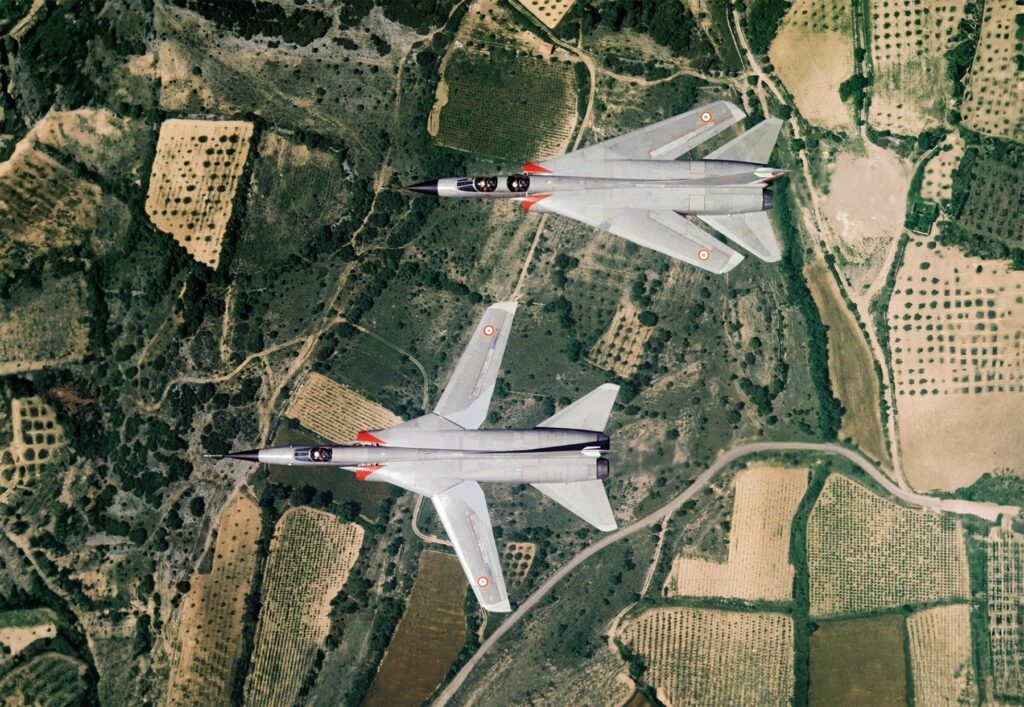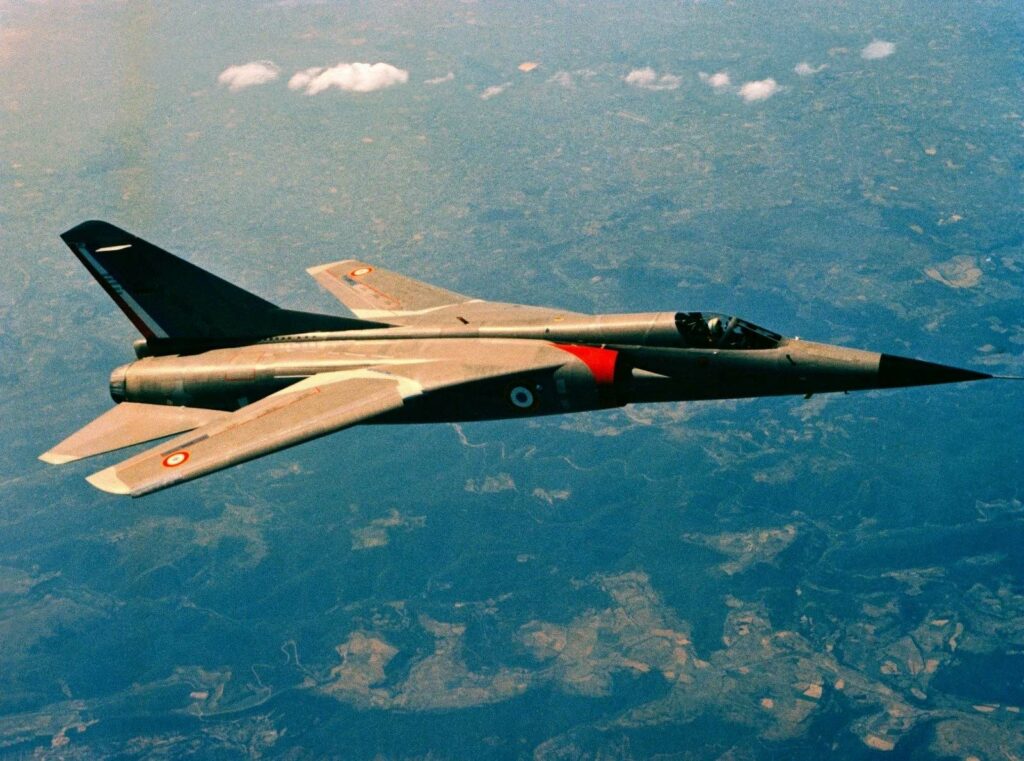The Dassault Mirage G was an experimental French jet designed with variable-geometry wings, epitomizing advanced aerodynamics and speed agility in its era.
In brief
The Dassault Mirage G was a prototype series developed by Dassault Aviation, showcasing a variable-sweep wing design intended for multirole capabilities, including interception and ground-attack. First flown in 1967, the aircraft embodied cutting-edge technology with its swing-wing mechanism, allowing for adaptable flight characteristics. Equipped with a single Pratt & Whitney/SNECMA TF306 turbofan engine, it demonstrated superior speed, reaching Mach 2.2, and exhibited remarkable agility and performance. Although it never entered production, the Mirage G series significantly influenced aerodynamic studies and contributed to the development of future aircraft, blending high-speed performance with operational flexibility.
The Dassault Mirage G series represents a significant leap in aviation technology, marking Dassault Aviation’s foray into variable-geometry wing aircraft during an era of rapid advancements in military aviation capabilities.

History of the Development of the Dassault Mirage G
During the 1960s, the landscape of aerial combat was rapidly evolving, with increasing demands for versatile aircraft capable of fulfilling multiple roles while exhibiting exceptional performance. Dassault Aviation, renowned for its Mirage fighters, initiated the Mirage G program to explore the potential of variable-geometry wings that could alter their sweep angle in flight, thereby optimizing performance across a broad range of speeds and mission profiles.
Launched in the mid-1960s, the Mirage G program aimed to create an aircraft that combined the high-speed performance of delta-winged designs with the low-speed agility and short takeoff and landing capabilities provided by variable-sweep wings. The program was a response to both the French Air Force‘s requirements and the international market’s growing interest in such technology.
The first flight occurred on November 18, 1967, signaling a new era in combat aircraft design, incorporating versatility and advanced aerodynamics. Although the Mirage G did not have a NATO nickname, its innovative design set a precedent in aviation engineering.
Design of the Dassault Mirage G
The Mirage G’s design was revolutionary, featuring wings that could sweep back for high-speed flight and forward for slower speeds and better low-speed control. This adaptability made the aircraft versatile across various mission profiles, from interception to ground attack. The fuselage was aerodynamically optimized to accommodate the swing-wing mechanism while maintaining the pilot’s excellent visibility and incorporating advanced avionics suites for enhanced mission effectiveness.
Powered by the Pratt & Whitney/SNECMA TF306 turbofan engine, the aircraft was designed to achieve speeds exceeding Mach 2. The integration of advanced materials and systems was intended to provide not only speed but also efficiency and reliability, although the complexity of the swing-wing mechanism posed challenges in maintenance and operational costs.
Performance of the Dassault Mirage G
The Mirage G exhibited remarkable performance characteristics, with its variable-geometry wings allowing for a top speed of Mach 2.2 and enhanced maneuverability at various speeds. The aircraft’s design facilitated a balance between high-speed interception capabilities and low-speed handling, crucial for diverse mission requirements. Its operational range and altitude capabilities were competitive, reflecting the advanced engineering and aerodynamic efficiency integral to its design.
When compared to its contemporaries, the Mirage G stood out for its innovative wing design and versatility, although it faced stiff competition from other variable-geometry aircraft like the F-14 Tomcat and the Panavia Tornado, which were also entering the scene around the same time.
Variants of the Dassault Mirage G
The Mirage G program led to several variants, each designed to test different aspects of the variable-geometry technology and aerodynamic configurations:
- Mirage G: The initial prototype demonstrating the basic swing-wing concept.
- Mirage G4/G8: Enlarged versions intended as two-seat, multirole fighters, with the G8 variant specifically tailored for carrier operations, featuring strengthened landing gear and arresting hooks.
These variants represented iterative advancements in the program, pushing the boundaries of the technology and design principles of the era.

Military Use and Combat of the Dassault Mirage G
The Dassault Mirage G, being an experimental prototype, did not see actual combat or operational military service. Its primary role was as a technology demonstrator, significantly contributing to the research and development of variable-geometry wing technology and its potential military applications. The insights gained from the Mirage G program informed future aircraft designs and aerodynamic innovations, influencing not only Dassault’s subsequent projects but also broader aerospace engineering principles.
The Dassault Mirage G series was a bold exploration into the capabilities of variable-geometry wing aircraft, embodying a blend of innovation, performance, and versatility. Though it never reached production or saw combat, its legacy endures in its contribution to aviation technology, influencing the design and development of future generations of combat aircraft and advancing the frontiers of aerospace engineering.
Back to the experimental aircraft section.